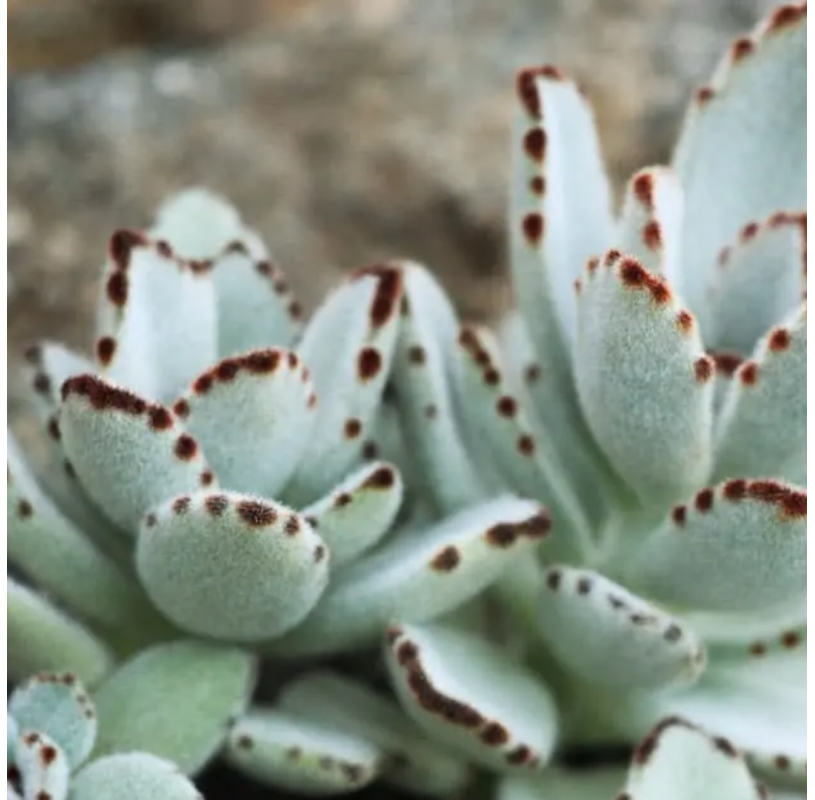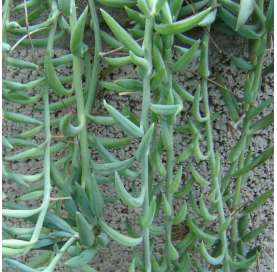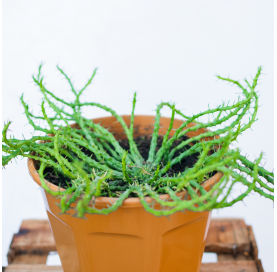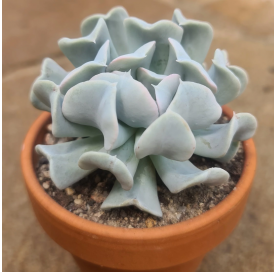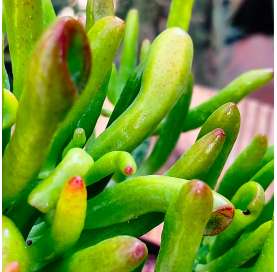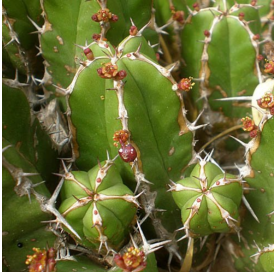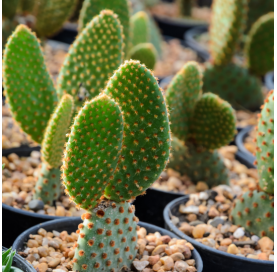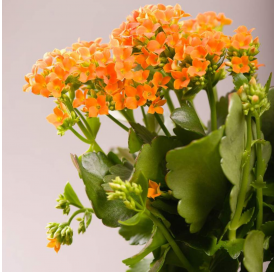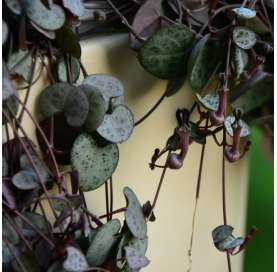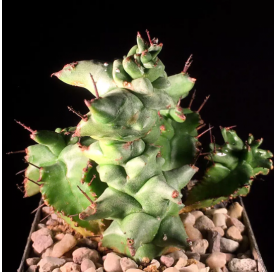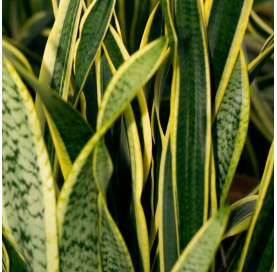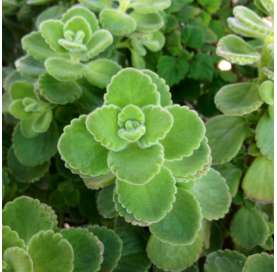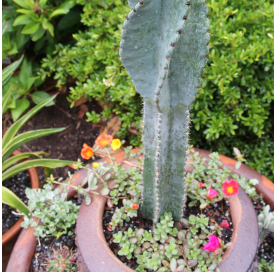Kalanchoe tormentosa - Cat's Ears Plant
Kalanchoe tormentosa is a resilient, low-maintenance succulent that thrives in bright light, well-draining soil, and requires moderate watering. Its unique foliage, covered with soft hairs, and its ability to produce small orange or yellow flowers make it visually interesting. Perfect for dry gardens, sunny indoor spaces, or as an indoor plant, it is an ideal choice for those looking for a plant that’s easy to care for and visually striking.
 Encrypted payments for greater security
Encrypted payments for greater security
To reduce the plant's time in transit, shipments are made from Monday to Wednesday.


Shipping only to mainland Spain and mainland Portugal
Description of Kalanchoe tormentosa:
Kalanchoe tormentosa, commonly known as the "chocolate soldier" or "cat's ears," is a succulent native to Madagascar. It is known for its thick, fleshy leaves that have a gray-green color with reddish edges and are covered with tiny soft hairs, giving them a velvety texture. The plant produces small flowers, usually orange or yellow, in clusters during the growing season, typically in spring and summer. This plant is resilient, easy to grow, and highly valued for both indoor and outdoor ornamental use.
History of Kalanchoe tormentosa:
Kalanchoe tormentosa belongs to the Crassulaceae family and is native to Madagascar, where it grows in dry, rocky areas. The genus Kalanchoe includes several species found in arid regions worldwide, many of which are cultivated as ornamental plants due to their hardiness and ease of care. Kalanchoe tormentosa became popular in gardening for its attractive foliage and ability to thrive in difficult conditions, such as low water availability and intense sunlight.
Care of Kalanchoe tormentosa:
-
Light: Kalanchoe tormentosa needs plenty of light to thrive but prefers indirect light. If grown indoors, place it near a sunny window, but avoid direct sunlight for long periods, as this can scorch its leaves.
-
Temperature: This plant prefers warm temperatures, between 18-25°C (64-77°F). It is sensitive to frost and should be protected from temperatures below 10°C (50°F).
-
Soil: It needs well-draining soil. A cactus or succulent mix works well, or you can improve regular potting soil by adding sand or perlite to enhance drainage.
-
Watering: Like other succulents, Kalanchoe tormentosa does not require frequent watering. Water it only when the soil is completely dry. During the winter dormancy period, water even less frequently. Overwatering can lead to root rot, so it’s important not to let the plant sit in water.
-
Fertilization: During the growing season (spring and summer), it can be lightly fertilized with a cactus or succulent fertilizer. However, it doesn’t need frequent fertilization.
Curiosities about Kalanchoe tormentosa:
-
Unique Foliage: One of the most interesting features of this plant is its foliage, covered with small white hairs that give it a soft, velvety texture. These hairs also help protect the plant from intense sunlight and conserve moisture.
-
Flowering: While not primarily grown for its flowers, Kalanchoe tormentosa produces small orange or yellow flowers in clusters during spring or summer.
-
Easy Propagation: This plant is easy to propagate through leaf cuttings. Simply cut a mature leaf, let it dry for a few days, and then plant it in well-draining soil.
Watering Kalanchoe tormentosa:
Watering Kalanchoe tormentosa should be done carefully to avoid excess moisture, which can lead to root rot. Generally, it should only be watered when the soil is completely dry, especially during its winter dormancy period. During the growing season (spring and summer), it may need more frequent watering, but always ensure the soil dries out completely between waterings.
Care and Pruning of Kalanchoe tormentosa:
-
Pruning: Regular pruning is not necessary, but you can remove any dead or damaged leaves. Pruning can also be done to shape the plant and maintain its size.
-
Maintenance: During its growth cycle, ensure you remove any dead or dried leaves to prevent fungal growth and keep the plant healthy. Keeping the plant clean will encourage better growth.
12 other products in the same category:
-
Senecio radican.€7.00
-
Euphorbia flanaganii€0.00
-
-
Crassula Ovata Hobbit...€5.10
-
Euphorbia handiensis€6.00
-
Puntia microdasys€6.00
-
Kalanchoe blossfeldiana€0.00
-
-
Euphorbia Horrida...€6.00
-
Sansevieria.€12.00
-
-
Spiral cactus€6.00

 English
English Spanish
Spanish